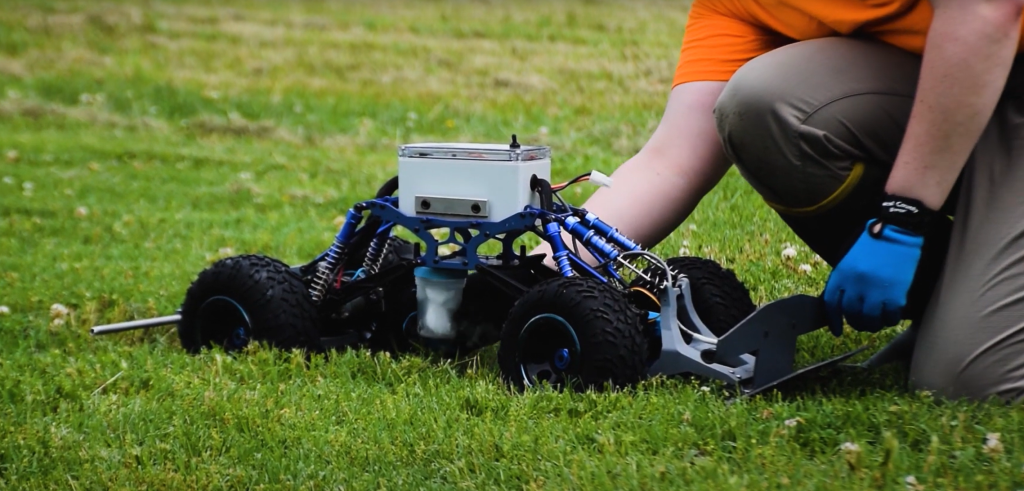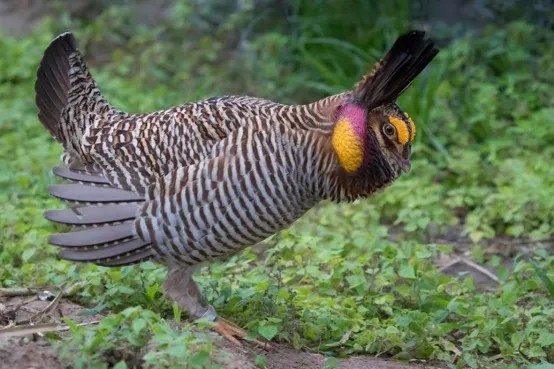Creation of a Native Meadow
With a shoestring budget and a lot of determination, the small 0.1 acre meadow area in front of the Earth Sciences Building at NASA Goddard Space Flight Center in Greenbelt, MD has become a shining star. Born from a collaboration with the University of Maryland Extension and the Master Gardener program, the meadow has meager beginnings. Sowed in 2017 from wild-collected seed and maintained with fairly minimal input from employees, in a little over four growing seasons the meadow project has bloomed into a nearly self-sustaining landscape that provides numerous ecosystem services. It serves as habitat to insects of many kinds, birds, mammals and even snakes; mitigates stormwater, sequesters carbon; provides beauty to the landscape; and offers health benefits. It has even caught the attention of Center management as the meadow offers an economic advantage over turf grass with its costly maintenance. Employees adore the meadow and want to see more areas transformed throughout the Center. The hope is that the B33 Meadow Demonstration Project serves as the prototype for future turf-to-meadow conversions at the Greenbelt campus, at other Goddard locations, and even elsewhere throughout the federal government. Other partnerships are being formed after the success of this one to continue on to other areas of the property.
Read More
Tick Bot: A local Partnership for a Nationwide Problem
It seems like there’s a “bot” for everything these days. And now there’s one more – the TickBot, which is being tested at NASA’s Langley Research Center in Hampton, Virginia. Created by Old Dominion University (ODU) in nearby Norfolk, the TickBot is a semi-autonomous, eco-friendly robot created to collect ticks. The general premise is a looped run set-up in the desired collection area or area to be protected. Tick Bot releases carbon dioxide along the loop that agitates ticks and bring them to the surface. Then as TickBot drives over the grass, it collects ticks in the cloth fibers trailing behind it. Graduate students collect ticks from the fibers and take them back to ODU. The pilot studies (off Center) demonstrated TickBot could reduce tick density to nearly zero for 24 hours after treatment. Work continues to validate and improve TickBot’s performance.
Read More
Attwater’s Prairie Chicken
An endangered species, the Attwater’s Prairie Chicken (APC) is actually a grouse native only to Texas and Louisiana. Prior to loss of their native habitat, they could be found in abundance on the Texas prairie. It is now estimated that less than 100 of these birds can be found in the wild at any given time, even with the help from a breed and release program led by Texas Parks and Wildlife. The Houston Zoo manages one of the captive breeding programs in Texas in support of the endangered species. Due to availability of land, in 2006 the Houston Zoo expanded its program to facilities at NASA Johnson Space Center at the delight of avid birder and Space Act Agreement manager Sandy Parker in the Environmental Office. Every spring, the APC males “boom” and dance dramatically to attract females who then pick the mate. The females lay one to two clutches of eggs on average per season. The Houston Zoo collects 300-500 eggs (between the Zoo and JSC) every spring during mating season and returns some mature birds to the wild while maintaining most to propagate the species in a controlled environment.
Read More

























